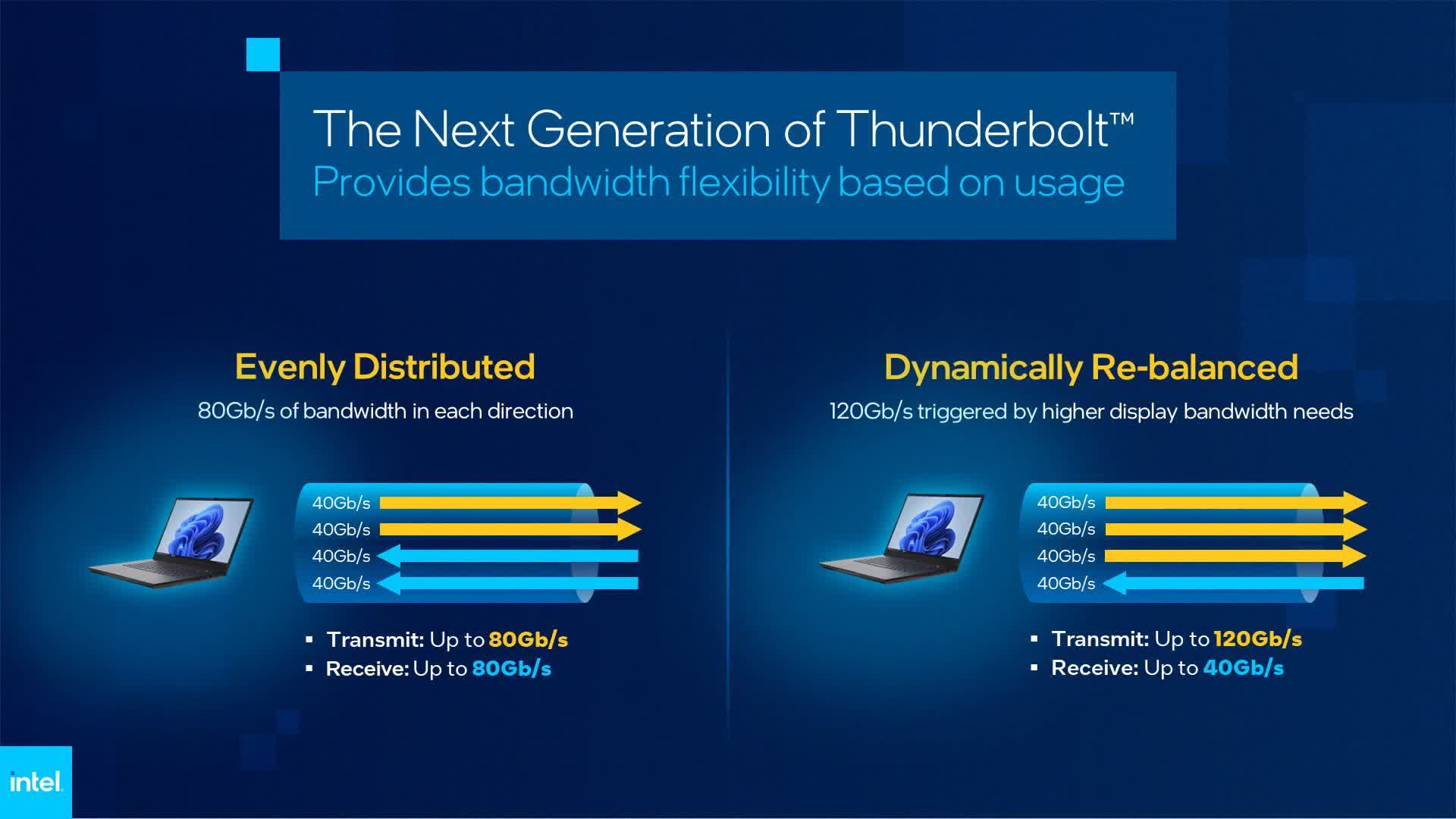Bottom line: Hot on the heels of the recently-published USB4 2.0 specification, the next generation of Thunderbolt promises similar capabilities. Thunderbolt and USB4 have been in lock-step for a while in terms of bandwidth due to their close relationship.

Intel shed more light on the successor to Thunderbolt 4 on Wednesday. Like USB4 2.0, the new standard offers a connection bandwidth of up to 80Gbps, while in some cases in can reach up to 120Gbps.
Next-generation Thunderbolt – Intel hasn't properly named it yet, so Thunderbolt 5 is not a given – supports bidirectional bandwidth up to 80GBps, which Intel first demonstrated in Israel last month. However, this week, the company also presented the new Thunderbolt's ability to transmit at 120Gbps while receiving at 40Gbps.
The USB Promoter Group, which includes the likes of Apple, HP, Intel, Microsoft, Renesas Electronics, STMicroelectronics, and Texas Instruments, briefly mentioned the same capability for USB4 2.0 when it published its specs earlier this week. The asymmetrical connection may be handy for USB4-based high-performance displays and other video intensive workloads. Intel specifically points out Thunderbolt's usefulness for gamers and content creators who need to move large files around.
According to Intel's charts, one difference between USB4 and next-gen Thunderbolt is that the latter requires 80Gbps bidirectional and 120Gbps asymmetric connections. In contrast, the chart shows the USB4 specification only optionally supports bandwidths above 20Gbps but doesn't distinguish between USB4 1.0 or 2.0.
The two technologies seem similar because USB4 1.0 is based on Thunderbolt 3. Both enabled 40Gbps connections, and their successors are upgrading to 80Gbps and 120Gbps almost simultaneously (Thunderbolt 4 maintained the same bandwidth as TB 3, but added more display and security capabilities).
Like USB4 2.0, next-gen Thunderbolt is compatible with previous versions of USB and Thunderbolt. With new signaling technology, it supports existing passive cables under 1m.
Next-gen Thunderbolt also works with DisplayPort 2.1, another connection specification released this week. VESA updated all DisplayPort 2.0 products to the new standard, which uses the same physical layer specification as USB4.
Intel plans to reveal the official name of next-gen Thunderbolt, along with more of its features, next year. The company could call it Thunderbolt 5 or label it a subdivision of Thunderbolt 4, similar to USB4 2.0's naming. However, some consider USB4's branding confusing.
https://www.techspot.com/news/96383-next-gen-thunderbolt-can-sometimes-reach-120gbps-like.html